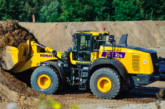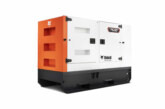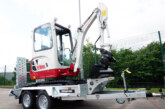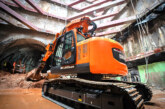Following the announcement in France of the R.495 recommendation, calling for all cranes above 30 m high to incorporate a mast elevator, many tower crane owners have sought to include this equipment in their investment plans.
Although it is only a recommendation, the safety and comfort of crane operators are vital, as are the smooth running and productivity of the site.
With this in mind, Manitowoc developed the Potain Cab-IN internal mast elevator, which can be mounted on the 1.6 m, 2 m and 2.45 m K-mast and is compatible with all current K-mast bases, such as fixing angle, chassis and cross shaped base.
The advantages of the Potain Cab-IN internal mast elevator are many:
- Simple storage and transport: Whether in the warehouse, on site or during transport, having the elevator equipment already integrated into the mast reduces the space required and, therefore, the associated costs. The mast also helps to protect the elevator, prolonging its service life.
- Easy assembly and safety: As the Cab-IN elevator is integrated into the mast, it is assembled at the same time as the crane. The only additional step compared to a conventional crane is the connection of the racks between the different mast sections and the commissioning of the crane elevator. 360° visibility from the inside of the crane elevator and the recessed start and end platforms allow the mast to be checked when the operator takes over.
- Cost efficiency: Compared to an external solution, the assembly and disassembly costs are much lower. There are no additional storage costs for the crane elevator as it is integrated into the mast. The same applies to transport, as no additional trucks are required and because the elevator is protected by the mast, maintenance costs are also reduced. The investment soon pays for itself, thanks to the savings in transport, assembly/disassembly time and storage.
- Quality and compliance: The partnership between Potain and Geda, a specialist and leader in the field of crane elevators, has resulted in excellent product quality. The Cab-IN internal mast elevator is easy to assemble, reliable and has been designed to be integrated into the different types of Potain K-masts.
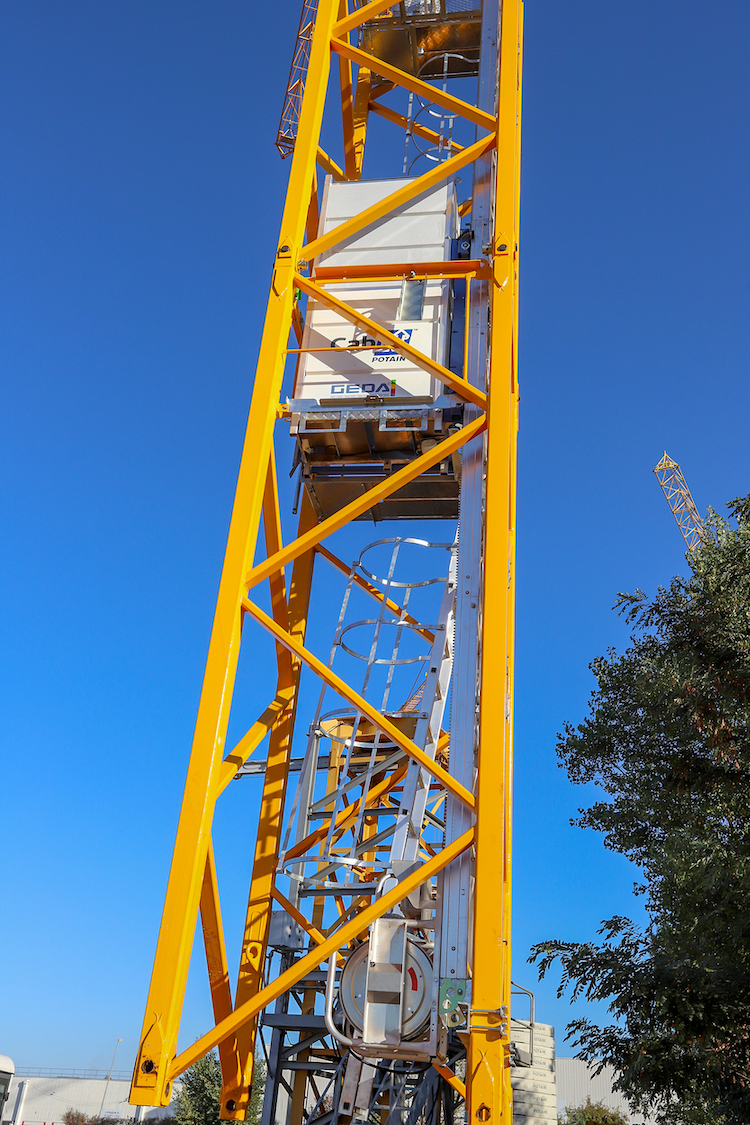
Feedback from users and rental companies has confirmed the advantages of this solution.
Duponchel, based in Kervignac, Brittany, owns a fleet of 30 top-slewing and 25 self-erecting Potain tower cranes and has both external elevators and internal Cab-IN elevators. The company made its first investments in Cab-IN in early 2019.
François Denoual, managing director of Duponchel, said: “Duponchel was keen to comply with the recommendations as early as possible, which is why we decided to invest in this crane elevator solution early on. The Potain Cab-IN internal crane elevator has proven to be a reliable and robust solution that is appreciated both by technicians during installation – it requires much less time than an external solution because the masts are already pre-equipped – and by users on a daily basis. Potain has been able to develop its product to take into account the various comments made by users. We are now very satisfied with the reliability, ergonomics and ease of handling of this solution.”
Longstanding Potain customer Poteau, meanwhile, made its first investments to comply with the R.495 recommendation and meet the needs of its end-users between 2019 and 2020. The company runs a fleet of 80 Potain cranes from its headquarters in Hénin-Beaumont, Pas-de-Calais.
Poteau’s manager, Thierry Poteau, said: “Today we have a mix of external and Cab-IN internal elevators. In our region, almost all cranes over 30 m high are equipped with an elevator. We have about twenty elevators for a fleet of 80 cranes, which enables us to cover our needs. The main advantages of the Cab-IN internal crane elevator, which is very much appreciated by our customers, are linked to the speed of its installation and dismantling, as well as its easy transportation because it is already integrated into the masts. The fact that the masts are pre-equipped requires less storage space, less transport and avoids any parts accidentally getting lost. The small surface area that is exposed to the wind is also an advantage of this type of system.”



